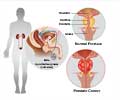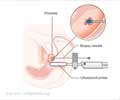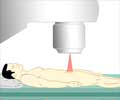A discovery in the production of AR-V7 protein provides hope for improved treatment options for metastatic prostate cancer patients.
- Researchers have discovered a new mechanism for producing the AR-V7 protein in metastatic prostate cancer
- This breakthrough could lead to improved treatment options for metastatic prostate cancer patients
- The discovery provides hope for future advancements in prostate cancer research
Role of AR-V7 Protein in Metastatic Prostate Cancer
The protein in question is called the androgen receptor (AR). AR plays a critical role in the development and progression of prostate cancer, particularly in its metastatic form. AR is a transcription factor, which means it helps regulate the expression of other genes. In prostate cancer, AR is often overexpressed, leading to uncontrolled cell growth and tumor progression.Previous Understanding of AR-V7 Protein Production
Traditionally, it was believed that AR was produced through a process called alternative splicing. Alternative splicing is a process by which different variants of a protein can be produced from a single gene. However, a recent study has identified an alternate mechanism for producing AR in metastatic prostate cancer.New Mechanism for AR-V7 Protein Production
The study, published in the journal Cancer Cell, was led by researchers from the University of Michigan. The team used a combination of molecular biology and bioinformatics approaches to investigate the role of a protein called NONO in AR production. The researchers found that NONO interacts with a specific region of the AR gene, known as exon 1.3. This interaction leads to the production of a variant of AR that is particularly active in metastatic prostate cancer. The team also found that inhibiting NONO led to a decrease in AR expression and tumor growth in mouse models of prostate cancer.Implications of the New Findings for Metastatic Prostate Cancer Treatment
These findings have significant implications for the development of new treatments for metastatic prostate cancer. Currently, treatments for metastatic prostate cancer typically involve androgen deprivation therapy (ADT), which targets the production of testosterone, a hormone that can promote prostate cancer growth. However, ADT is not effective in all cases, and patients often develop resistance to the treatment.Future Directions for Research on AR-V7 Protein Production
The discovery of an alternate mechanism for AR production could lead to the development of new therapies that target this pathway. By inhibiting NONO or other proteins involved in the process, it may be possible to reduce AR expression and slow the progression of metastatic prostate cancer.Moreover, these findings highlight the importance of personalized medicine in prostate cancer treatment. By understanding the molecular mechanisms that drive cancer progression, it may be possible to develop treatments that target specific genetic mutations or pathways in individual patients.
In conclusion, the discovery of a new mechanism for producing the androgen receptor in metastatic prostate cancer is a significant step forward in our understanding of this complex disease. By identifying new therapeutic targets and developing personalized treatment approaches, we can improve the outcomes for patients with metastatic prostate cancer. Further research is needed to validate these findings and translate them into effective treatments for patients.
Source-Medindia









![Prostate Specific Antigen [PSA] Prostate Specific Antigen [PSA]](https://www.medindia.net/images/common/patientinfo/120_100/prostate-specific-antigen.jpg)






